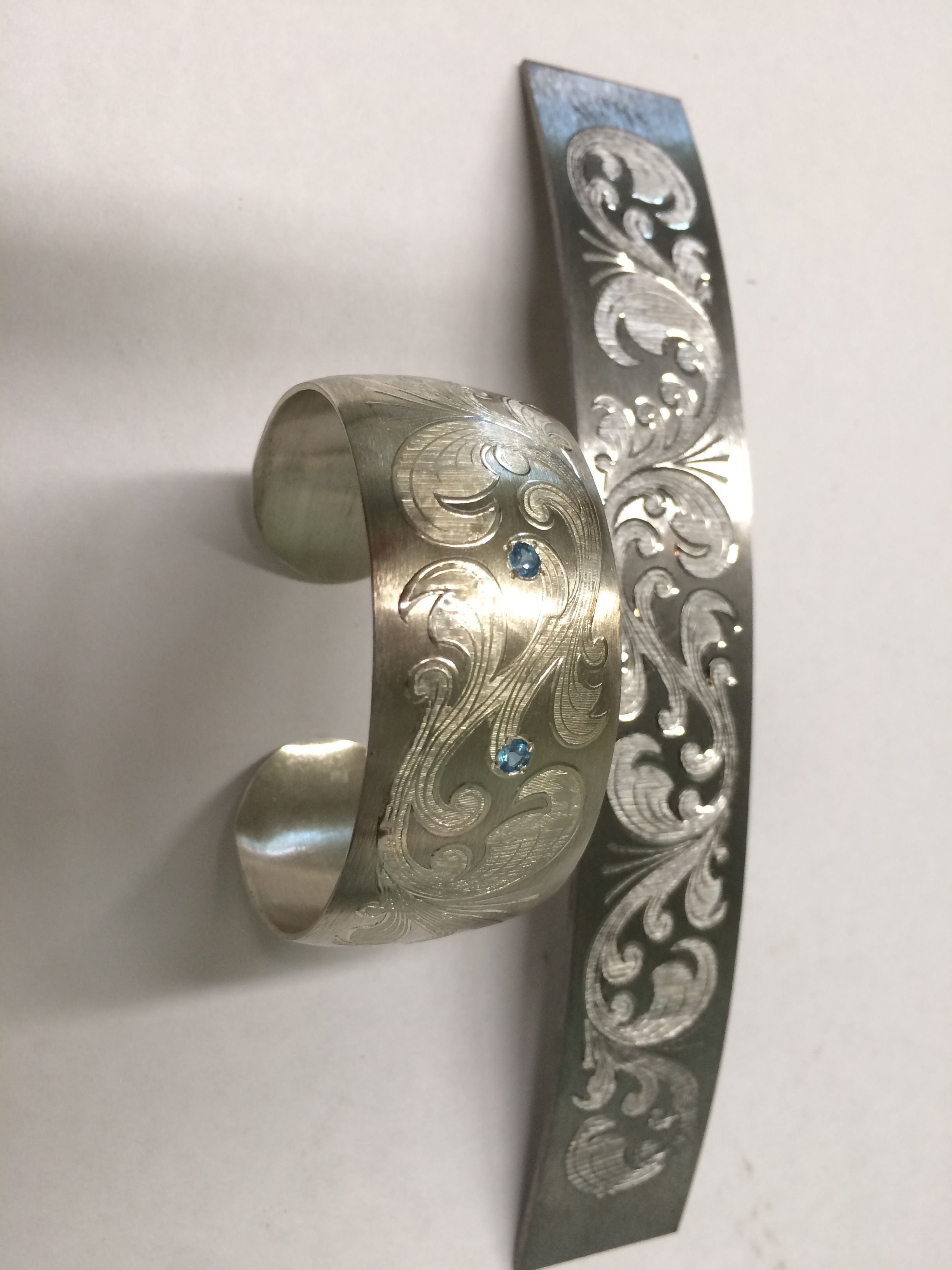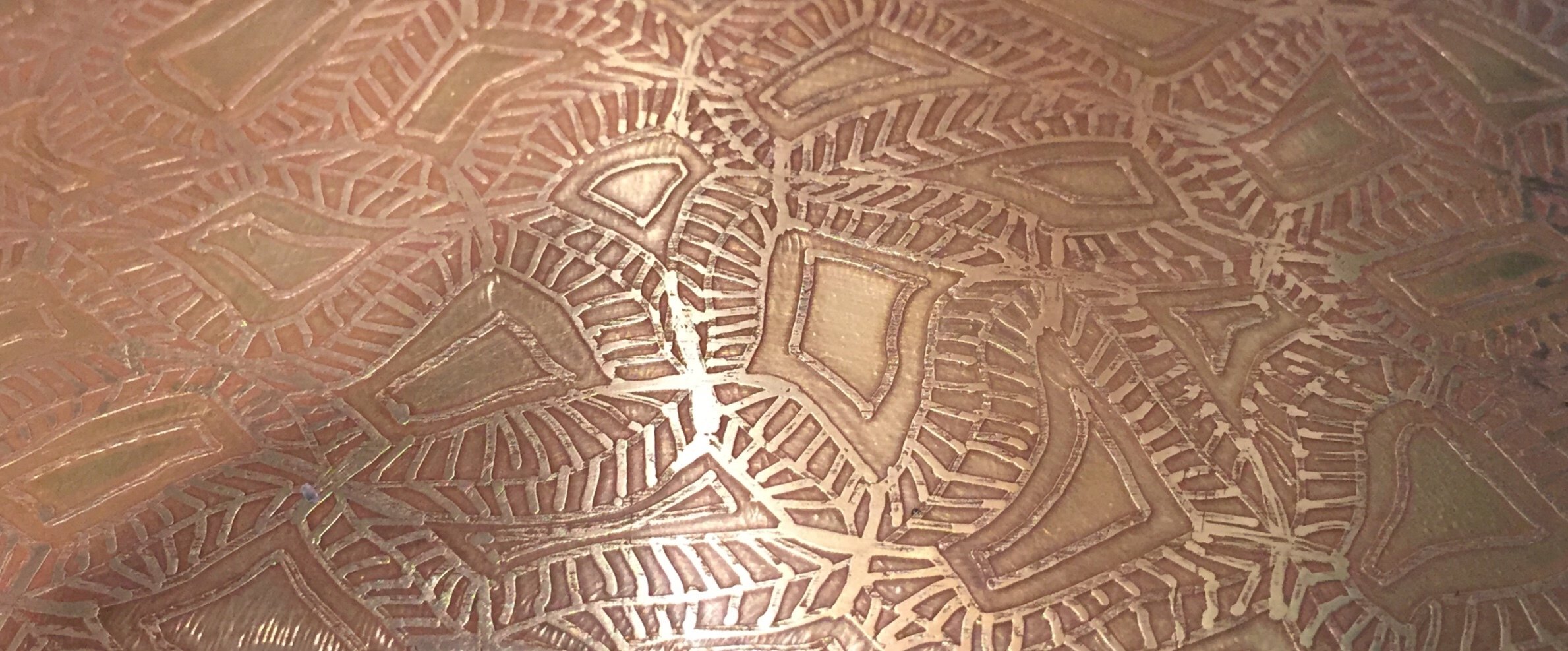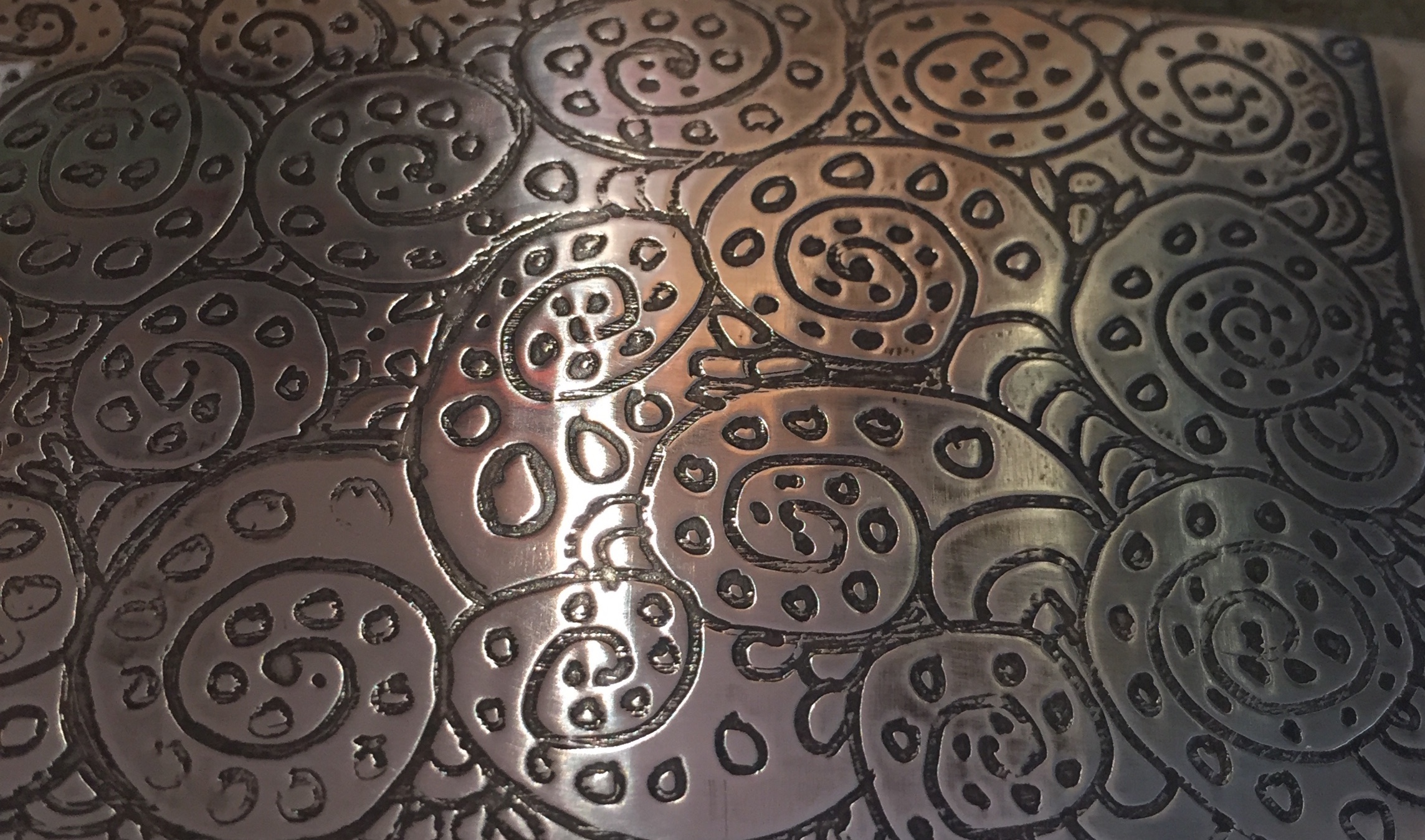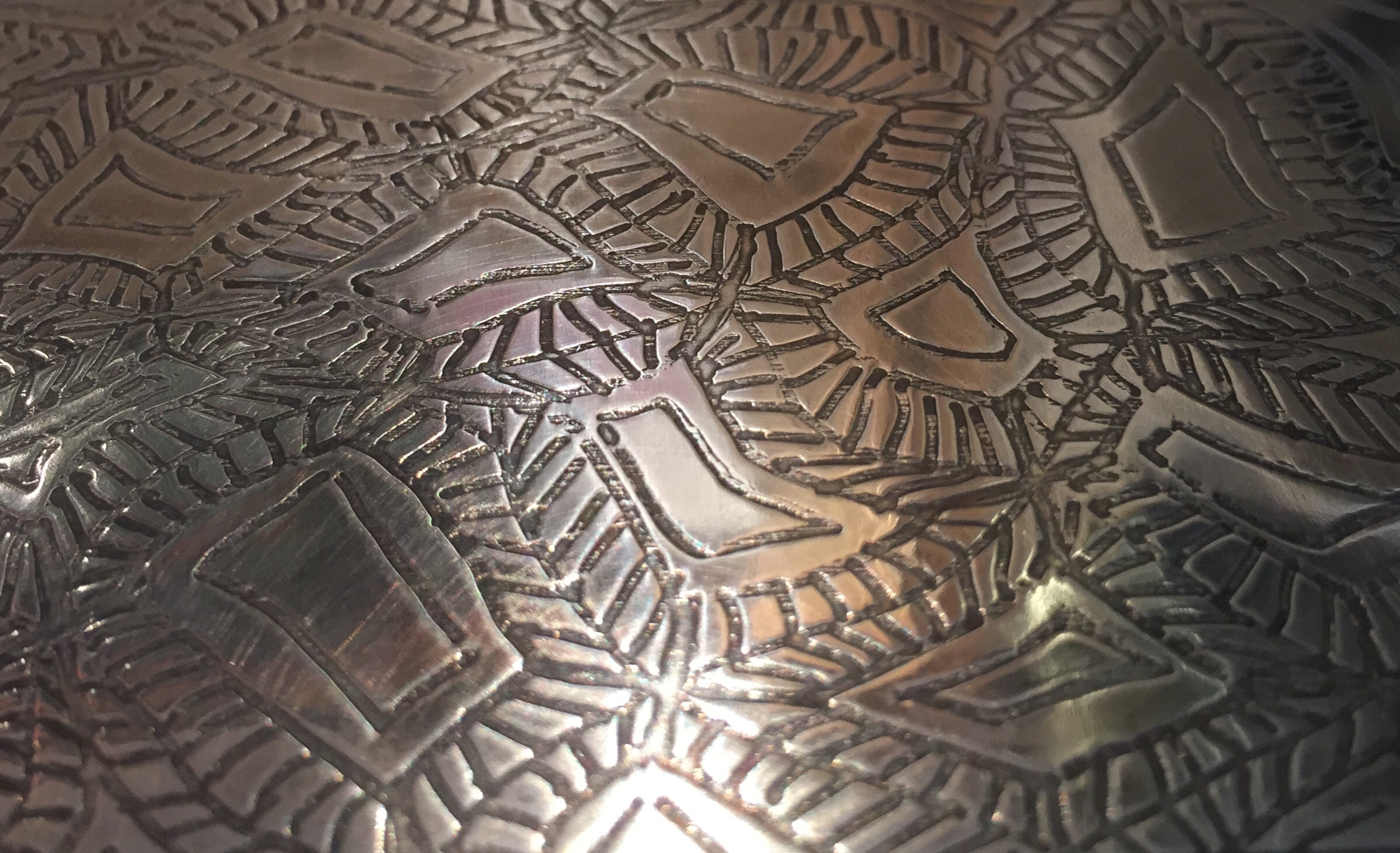I etch a lot of brass plate and I roll quite a bit of it too. I match the thickness of the brass to the thickness of the silver. But I’d roll nothing thinner than .20ga.
Don Meixner
I etch a lot of brass plate and I roll quite a bit of it too. I match the thickness of the brass to the thickness of the silver. But I’d roll nothing thinner than .20ga.
Don Meixner
I hand engrave steel plates and run them through the rolling mill with silver sheet. It is mild tool steel and Is good for about 20 passes before it gets too distorted. I don’t think brass is going to last nearly that long. 
Would traditional etching (printmaker) plates work? If I recall my printmaking days, the zinc plates last many runs through the press. They are normally sold in 16g.
It would be my opinion that brass is harder than zinc. And I don’t know anything about print making but I imagine that pressing a pattern into silver with a rolling mill requires a lot more pressure than printing on paper.
Makes sense! I wasn’t sure which would be harder.
I believe it does John. The rolling pressure isn’t straight down with a Mill as you know. I think you’d distort the brass long before you had the pressure to imprint the silver with an exact representation.
Sent from my Verizon Wireless 4G LTE DROIDOn Apr 24, 2017 1:28 PM, John Wade <orchid@ganoksin.com> wrote:
WADEDESIGNS1
April 24
It would be my opinion that brass is harder than zinc. And I don't know anything about print making but I imagine that pressing a pattern into silver with a rolling mill requires a lot more pressure than printing on paper.
Visit Topic or reply to this email to respond.
Brought to you by:You are receiving this because you enabled mailing list mode.
To unsubscribe from these emails, click here.
hi All, what would be better would be stainless steel. They would last
forever. i engraved both sides of a 20 gauge sheet of stainless. i then
put a sheet of silver on each side like a sandwich and run it through the
rolling mill. Because you have silver on both sides the steel does not
curve. it can be etched with a different mordant. Vince LaRochelle
I might have to try stainless. I have problems getting the silver and the steel to stay perfectly lined up with each other. Even though my mill rollers are as perfectly even as I can get them and it is a fairly new mill. The silver wants to wander off to one side or the other. I also considered hardening the steel.If I was selling as many embossed bracelets as engraved bracelets I would probably be trying more things out. But customers really want the engraved even though the embossed is half the price.
How thick is 20g stainless in mm? As US and European gauge is different I always have to look it up to convert.
.81 mm
Sent from my Verizon Wireless 4G LTE DROIDOn Apr 25, 2017 10:15 AM, Theresa Hing <orchid@ganoksin.com> wrote:
theresahing
April 25
How thick is 20g stainless in mm? As US and European gauge is different I always have to look it up to convert.
Visit Topic or reply to this email to respond.
Brought to you by:You are receiving this because you enabled mailing list mode.
To unsubscribe from these emails, click here.
I etched two 20 gauge brass plates and put them through the mill with 20 gauge silver. I will upload the photos.



Beautiful results. How many passes with the silver until the brass plate distorts?
I cut my silver sheet larger than my stainless because of that reason.
Vince Larochelle
Good question, I will post after I have done a number of passes. There is no visa le distortions after the first pass.
{Would traditional etching (printmaker) plates work? If I recall my printmaking days, the zinc plates last many runs through the press. They are normally sold in 16g.}
they might however I would not want to contaminate my mill or workspace with zinc… it makes holes in silver
Aurora
Good solid info here. Listen to this.
{ I have problems getting the silver and the steel to stay perfectly lined up with each other. Even though my mill rollers are as perfectly even as I can get them and it is a fairly new mill. The silver wants to wander off to one side or the other.
I either wrap my strips of metal in several wraps of paper towel or use painters tape to hold them together.
Aurora
It seems to me that brass will get deformed fairly quickly. I have never done this, so I look forward to answers from others who have.
I’ve used work hardened electro etched brass plates run through a rolling mill to pattern very well annealed sterling silver.
The brass plates are generally good for between 10 and 20 passes through a rolling mill before the pattern becomes too degraded to be useful.
Your mileage may vary of course! It actually depends on how closely you want the pattern in the silver to be the original. To use an analogy, the rolled result progresses from being a mirrored clone of your original, to a twin sibling, to just a sibling, to a close relative, to someone who might be related, to someone who is related if you are really intoxicated…
Rob,.
I have rolled a few patterns into sterling using etched brass plates. You get a few to several good impressions before the brass degrades to unusable. The plate has to be very well annealed, and as thick or thicker than the brass. . the rollers have to be parallel or the impression she’s off. The best impressions I have had were with piece of cereal box between the roller and the plate. The card board compresses and keeps the skewing to a minimum.
The compression pressure takes some practice to get right.
D
Sent from my Verizon Wireless 4G LTE DROIDOn Apr 27, 2017 3:29 PM, Robert Meixner <orchid@ganoksin.com> wrote:
rmeixner
April 27
It seems to me that brass will get deformed fairly quickly. I have never done this, so I look forward to answers from others who have.
Visit Topic or reply to this email to respond.
Brought to you by:You are receiving this because you enabled mailing list mode.
To unsubscribe from these emails, click here.